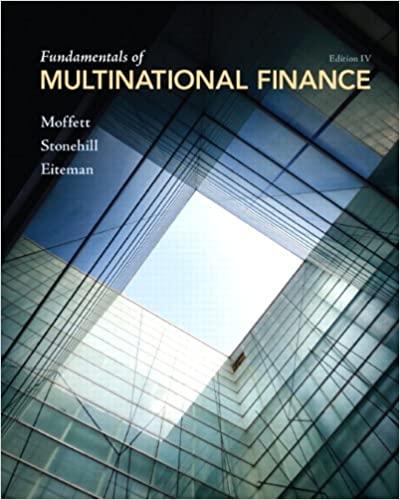Question
John, Dave and Mary (Owners) formed an LLC for purposes of constructing a retail shopping center (the Center) in Indianapolis, Indiana. They secured a letter
John, Dave and Mary (Owners) formed an LLC for purposes of constructing a retail shopping center (the Center) in Indianapolis, Indiana. They secured a letter of intent from Target in which Target agreed to construct and open a store in the center and to pay rent of $10,000 per month for a 10-year lease. Chase bank gave Owners LLC a $20 million construction loan to build the Center based on the commitment in the Target letter of intent. Based on Targets commitment in the letter of intent, Owners also were able to secure letters of intent from 5 other businesses to lease the remaining spaces in the Center.
Owners LLC entered into a contract with Patterson Construction Company to serve the general contractor for the Center. Patterson entered into a subcontract with Jones Electric Company for the electrical work. Target entered into separate contracts with Patterson and Jones for the construction and electrical work on its store in the Center. Both contracts stated that Patterson was responsible for jobsite safety. However, in both contracts, Jones agreed to defend and indemnify Patterson and Owners LLC for any liability arising out of Jones electrical work. Patterson also agreed to defend and indemnify Target and Owners LLC for any liabilities arising out of construction of the Center and the Target store.
The loan agreement for construction of the Center required liability insurance and builders risk insurance for the project. Owners asked their insurance agent, the Smith Agency, to procure that insurance. Smith procured the insurance from Travelers Insurance Company. Target purchased a separate insurance policy from Ace Insurance Company for construction of its store.
Construction of the Center was beset with problems, including the following:
During construction of the Target store, an employee of Jones named Sally was electrocuted and badly burned. An investigation revealed that one of the refrigerators she was working on for the Target store had an exposed wire that was not labeled and that Sally failed to notice. The refrigerator was manufactured by General Electric.
A storm knocked over one of the exterior walls of the Target store during construction, which also caused damage to an adjacent space in the Center. The clean-up and repair delayed construction of both the Target store and the Center by 3 months. Owners made an insurance claim, but discovered that the Travelers policy Smith Agency had procured did not include coverage for delay. Travelers also refused to pay for the clean-up and repair based of a faulty workmanship exclusion in the insurance policy. Travelers contends the wall was improperly constructed and should not have fallen in the storm. Patterson disagrees and also has refused to absorb the clean-up and repair costs.
Target notified Owners that it would complete construction of its store, but that it was not going to enter into the lease or open its store in the Center. Target told the Owners this was because the Covid pandemic had moved most of its orders online, so Target was scaling back its number of physical stores. Target said it did not owe any damages to Owners because (1) the letter of intent was not enforceable and (2) the letter of intent said that Target could terminate it based on matters outside of Targets control. In fact, Target dropped the project because the Target employee who signed the letter of intent did not have authority to enter into the letter of intent; and when his manager discovered the letter of intent, the manager ordered the project cancelled.
Based on Targets notice that it would not open its store, Chase declared a default on the construction loan and refused to provide any funds to complete construction of the rest of the Center. These two circumstances also cause the remainder of the businesses who had signed letters of intent to open stores in the Center to terminate their letters of intent.
You are an attorney and Owners have come to you asking (1) what claims they may be able to assert, (2) what claims may be asserted against them or others, and (3) what potential issues you see in connection with these claims. Write a memo to them answering these questions.
Step by Step Solution
There are 3 Steps involved in it
Step: 1

Get Instant Access to Expert-Tailored Solutions
See step-by-step solutions with expert insights and AI powered tools for academic success
Step: 2

Step: 3

Ace Your Homework with AI
Get the answers you need in no time with our AI-driven, step-by-step assistance
Get Started


